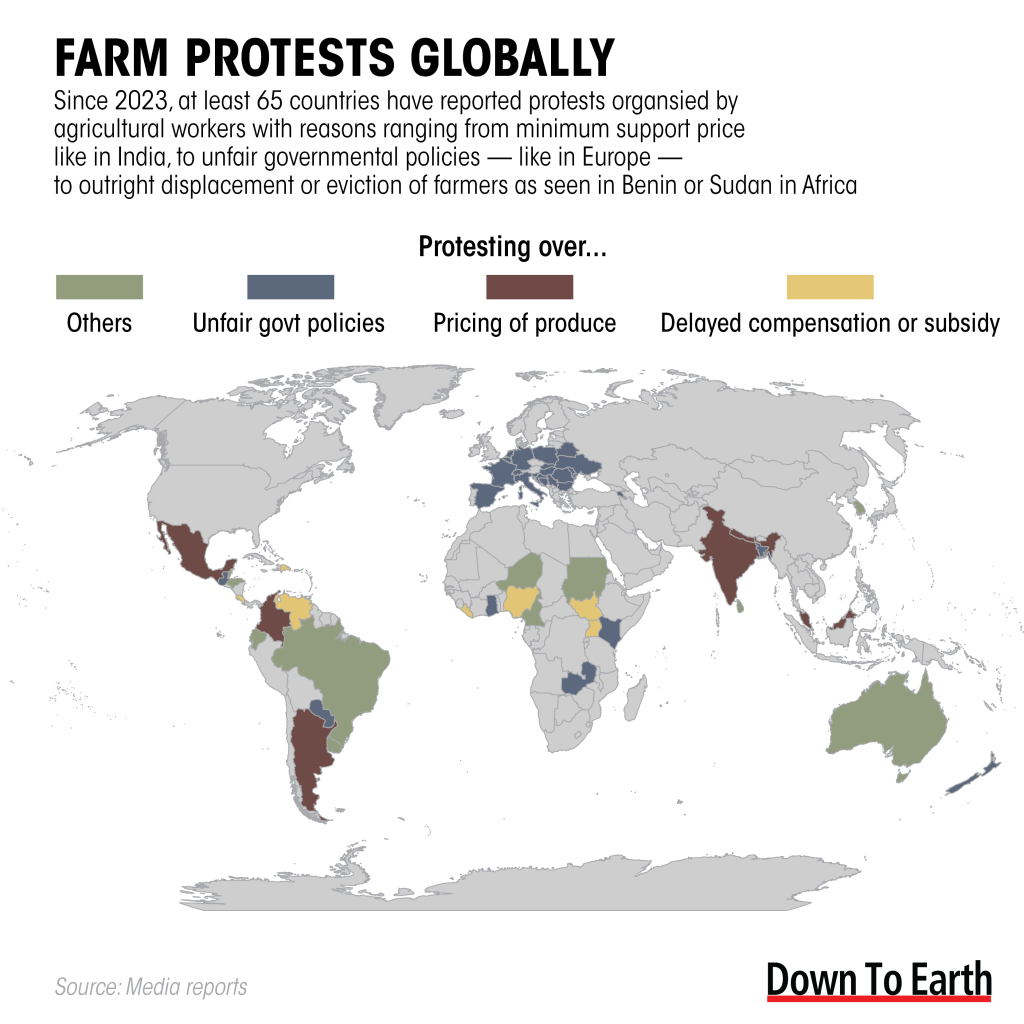Producers in South America, Europe, India, Nepal demand better prices and policies
| Region | No of countries where farmers protested |
| Africa | 12 |
| Asia | 11 |
| Europe | 24 |
| North and Central America | 8 |
| South America | 8 |
| Oceania | 2 |
Farmers protested in 67 per cent of countries in South America region, for a variety of reasons, such as wanting better export exchange rates and reduced taxes, amid of an extended economic downturn and Argentina’s devastating drought, which have severely damaged crops and agricultural output.
Brazilian farmers demonstrated against genertically modified maize-induced unfair competition in the agricultural markets. Farmers in Venezuela requested access to diesel that was subsidised. Colombian rice growers sought higher pricing.
Around 47 per cent of countries in Europe saw protest by the farmers over low crop prices, rising costs, low-cost imports and environmental rules imposed by the European Union. For instance, farmers in France protested against low-cost imports, a lack of subsidies and higher production costs by taking to the streets.
Farmers protested in 35 per cent of North and Central American countries. Farmers in Mexico demonstrated against the poor prices for their corn and wheat production, while those in Costa Rica called for further government help for the industry, which they alleged is beset by debt. Mexican farmers in the drought-stricken province of Chihuahua protested in September 2023 over their government’s plan to export limited water supplies to the United States.
Around 22 per cent countries across Africa witnessed protests by the farmers. The key reasons behind these protests included — poor pricing of the crops amid high costs of production. For example, in August 2023, the potato farmers in Kenya protested in demand of better price. While the Cocoa farmers in Benin were against eviction,destruction and sale of their cocoa plantations to foreign companies, the farmers in Cameroon were against the government ban on cocoa exports to Nigeria. Coffee farmers in Kenya protested against delicensing of most private millers in the county. In Kenya, the sugarcane and tea farmers protested against unfair government policies. The protest in Nigeria was unique as women farmers took to the streets to raise their voice on the challenges they continue to face across the country in the course of farming.

Around 21 per cent of countries in the Asian region saw protests by farmers. This included the protests by Indian farmers reported from at least nine states / Union terrirories during the period.
Farmers gathered in Delhi on February 13, 2024 with demands which included guaranteed crop prices, doubling of farmers’ income and the loan waivers. Farmers in Nepal staged protests because they were not receiving a fair price for vegetables that were being imported from India. Protests in Malaysia and Nepal were driven by low prices for rice and sugarcane, respectively.
Farmers’ protests occurred in two nations, or 14 per cent of the countries in the Oceania region. In 2023, farmers in New Zealand staged protests against government regulations that were placed on them and other food producers. Farmers in Australia protested against the proposed high-voltage overhead powerlines that would pass through their land.
We are a voice to you; you have been a support to us. Together we build journalism that is independent, credible and fearless. You can further help us by making a donation. This will mean a lot for our ability to bring you news, perspectives and analysis from the ground so that we can make change together.


















































